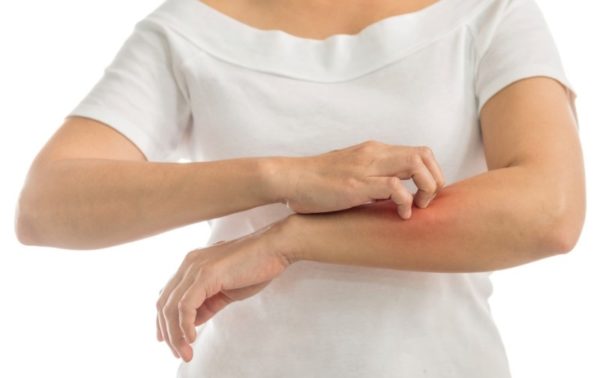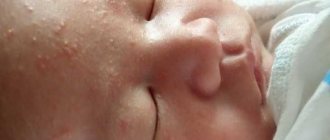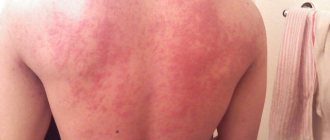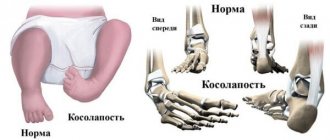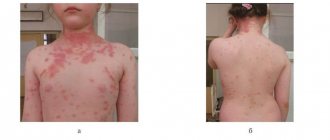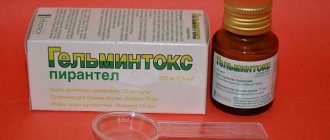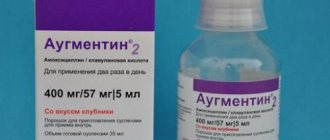White spots on a child's skin occur for various reasons. Most often this indicates depigmentation. This means that the amount of melanin decreases in certain areas of the skin. This phenomenon is still being investigated; scientists continue to find out the causes of the condition. Sometimes these white spots turn out to be a symptom of a disease; after treatment they go away.
Child's shoulder
Why does the skin become discolored in infants?
Small white spots on the body of a newborn baby occur due to a decrease in the melanin pigment in the body. The general name for this phenomenon is hypopigmentation. The exact causes of this condition are unknown, and there are no effective treatments. There are procedures that improve the appearance of the skin.
The main diseases in infants with white spots on the skin:
- vitiligo;
- pityriasis;
- leucoderma;
- helminthic infestations;
- infectious diseases;
- insect bites similar to illness;
- hypovitaminosis.
There are also several factors that contribute to the development of skin hypopigmentation:
- heredity;
- prolonged exposure to the sun;
- close contact with an infected person and a carrier of skin fungus;
- lack of hygienic child care;
- unbalanced infant nutrition.
To make an accurate diagnosis of the baby, you will have to undergo an examination and undergo a series of tests. Doctors need to collect a complete history from the parents to find out the causes of the spots.
Important! Non-infectious depigmentation cannot be completely cured.
A baby with a weak immune system is more often susceptible to various diseases. White spots on a baby's body occur for various reasons. Some of these conditions can be treated, others are hereditary and cannot be cured.
Diagnosis
To make a diagnosis it is necessary to undergo an examination. Only a specialist can make an accurate diagnosis. For this purpose they prescribe:
- examination by a dermatologist;
- general blood analysis;
- a swab from the surface of the damaged area;
- bacteriological analysis and smear culture;
- blood test for antibodies to syphilis.
Such methods will help to exclude incorrect diagnoses and begin proper treatment of the disease. The results will be ready in just 5-10 days.
Allergy to the sun
This is a rare condition in which the baby's body produces antibodies when the sun's rays hit the skin. Rashes appear on it, accompanied by itching. After they pass, white spots remain and quickly disappear. You should try to expose your child to walks in the bright sun as little as possible. The baby's body is covered with light clothing and appears outside in the afternoon.
Nevus
It appears on the baby's body around 3 months. The edges of the spots are wide and uneven. They cause great fear in the eyes of parents. However, doctors say that nevus is completely safe and does not cause any harm to health. It is no different from an ordinary mole. It is recommended to monitor its size. If the spot enlarges, it is shown to a dermatologist; this may be a sign of the development of cancer.
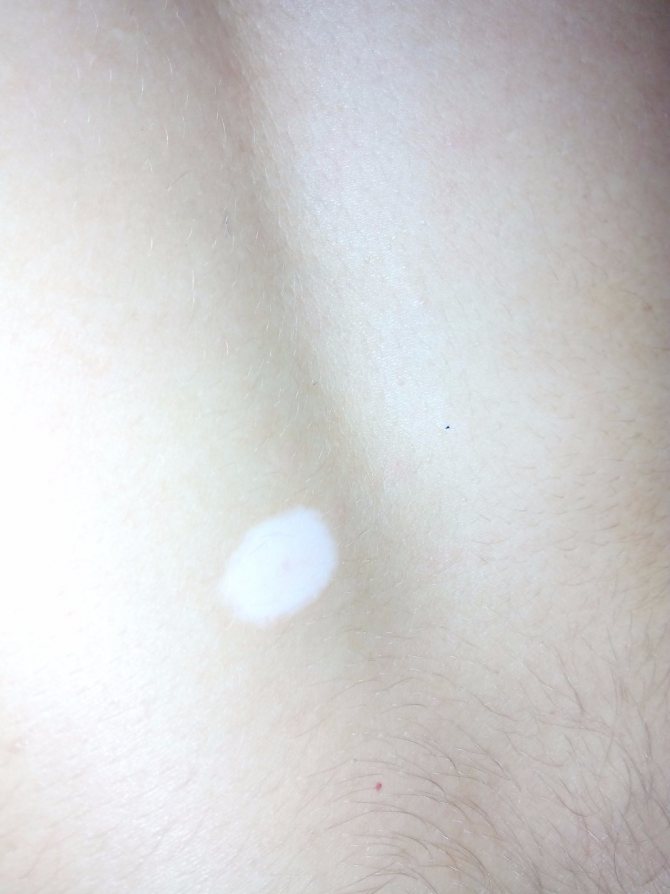
White spot on back
Types of treatment
To prescribe competent treatment, a diagnosis is first made. There is no cure for vitiligo; doctors can improve the appearance of the skin, but it is impossible to completely get rid of the spots. For other diseases, there are effective treatment methods. If fungus is present, antimycotic ointments and tablets are prescribed. There are several types of leucoderma, so the causes of its occurrence are first studied.
Reason: poor nutrition
White spots on a child's skin can be caused by poor nutrition. In this case, the mother needs to adjust the baby’s diet. Make sure that there is no deficiency of vitamins, minerals, microelements. It is believed that a deficiency of vitamins necessary for the body can contribute to the appearance of these ailments. Give preference to natural products, eat more vegetables, fruits, and nuts.
Make sure your diet is balanced. Do not overindulge in sugary foods . The baby's diet should contribute to the proper functioning of his gastrointestinal tract.
Reasons for the appearance of spots in children after one year
A white spot on a child's skin sometimes causes a lot of concern. If it is small in size, does not increase, most likely it is not harmful to health. Large affected areas need to be treated.
Vitiligo
Red spots on the face of a newborn baby
This is a manifestation of skin depigmentation, the appearance of light areas on it. The spots form on the stomach, face, arms and legs, back, but do not affect the palms and feet. The disease does not harm health and does not affect the condition of the body. A person with vitiligo can lead a full life. The only negative is the aesthetic side, especially if the spots are on the face. In people with fair skin, the affected areas are faintly visible.
Important! Vitiligo does not in any way affect the appearance of cancer in the future.
Pitiriaz
Pityriasis alba is a dermatological disease caused by fungi. Rashes in the form of white spots appear on the skin of the face, neck, arms, and abdomen. They have clear boundaries and are not accompanied by itching. The disease is transmitted to other people through close contact. After treatment, the spots disappear completely. Most often, children from 3 to 16 years old become infected with pityriasis. The healing process lasts from a couple of months to several years, then a spontaneous complete cure occurs.
Leucoderma
The disease comes in different types. This is a disease that causes hypopigmentation throughout the body. The spots are small and do not grow. The treatment method depends on the cause. Types of leucoderma:
- Infectious. Bacteria penetrate the skin cells and block the production of melanin. Small white spots appear on the body. Most often, leukoderma is caused by syphilis bacteria, lichen, and leprosy. Marbled spots indicate the syphilistic form.
- Congenital. It occurs as a result of intrauterine damage to the fetus; such genes are passed from parents to children. This is one of the forms of vitiligo, the disease is accompanied by autoimmune diseases and genetic syndromes.
- Toxic. It is rare in children. Appears due to prolonged systemic exposure to body cells of drugs or chemicals. The stains will remain for life.
- Immune. Melanocytes are cells that produce pigment for skin color. They are affected by systemic lupus erythematosus, scleroderma, and sometimes the presence of helminthic infestations. After getting rid of the parasites, the skin tone is restored.
- Post-inflammatory. It appears as a consequence of severe dermatological diseases such as psoriasis and eczema, burns. White scars form on the surface.
- Idiopathic. Includes other forms of leucoderma with unknown causes.
In the first month of a newborn's life, skin diseases may not manifest themselves in any way. The first symptoms of white spots appear closer to six months. This applies to all forms except congenital vitiligo.
Important! Vitiligo is not contagious and cannot be spread from person to person.
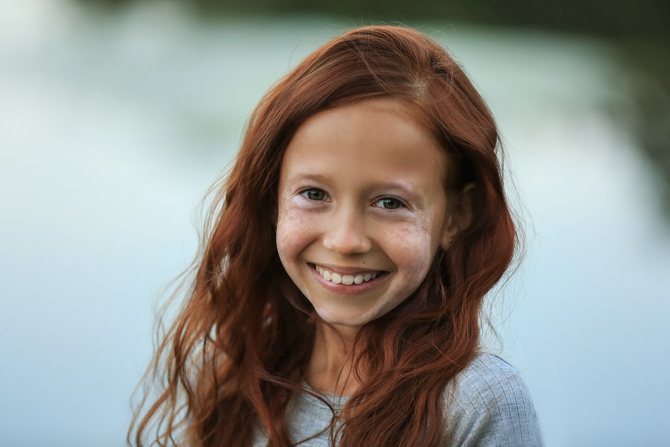
Red-haired girl
Diagnosis and treatment of the disease
Various tests are used to determine the type of disease. To carry them out, scrapings are taken from the affected areas of the skin. Sometimes a blood test is done to rule out other diseases. An alternative may be inspection using ultraviolet light.
To treat white pityriasis (and pink), it is important to follow some doctor’s recommendations:
- do not take baths, only shower;
- refuse synthetic clothing;
- avoid hypothermia or overheating of the body;
- follow a hypoallergenic diet;
- stop smoking and drinking alcohol;
- Do not use cosmetics on affected areas.
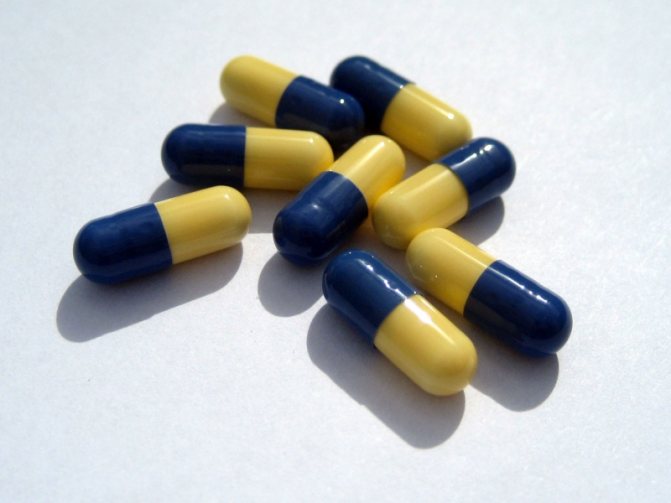
The following drugs are suitable for internal use:
- antihistamines (Aleron, Cetrin, Claritin, Zodak.);
- Ascorutin;
- calcium preparations.
If the course of the disease is associated with an increase in temperature, antibiotics (Tetracycline and drugs of the same group) may be prescribed.
Antifungal agents are used for local treatment:
- Ketoconazole;
- Dermazol.
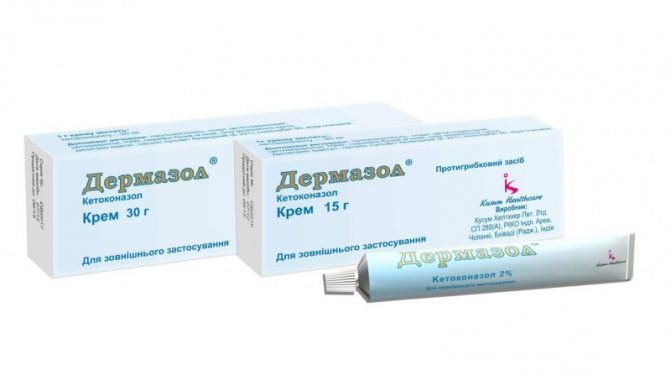
Any ointment for ringworm will also be effective. The most popular are:
- Hydrocortisone ointment;
- Ointment Sinalar;
- Prednisolone;
- Ointment Loriden A;
- Flucinar ointment;
- Pasta Lassara;
- Tsindol;
- Sulfuric ointment;
- Riodoxolinic.
Treatment methods and drugs
Treatment of white spots on the tummy, arms, legs and other parts of the body begins immediately after undergoing an examination and determining the cause of the disease. Typically, therapy is aimed at eliminating an unaesthetic skin condition. For patients with vitiligo, topical steroid medications are prescribed. It is recommended to combine primary treatment with herbal medicine, special nutrition and vitamin therapy.
Yellow spots on a child’s head - what is it, what disease?
If the disease is infectious, the doctor prescribes antifungal drugs and treatment for worms. However, the spots do not go away immediately; it will take 3-6 months for the pigmentation to normalize, it all depends on the extent of the damage.
Scabies and insect bites
Scabies is common in children of any age. It is easy to become infected - a short contact with a sick person is enough. There is also a household method of transmission. These are small mites that penetrate human skin. At the site of the bites, a slight swelling forms, which is very itchy. The spots remain on the child’s body even after complete healing. They turn white and take a long time to pass.
The treatment regimen is not very simple. It is necessary to change clothes, bedding and boil toys daily. The baby's body is lubricated with benzyl benzoate ointment 1%. In this case, the baby cannot be washed during therapy.
Bites from blood-sucking insects also leave white spots on the baby’s body after healing. In the future, pigment synthesis is restored at the site of the lesion. While the child is small, they try to go out into the forest with him less. To prevent bites, use insect repellent sprays.
Important! Scabies spreads very quickly and can easily be contracted by adults. The child is temporarily quarantined.
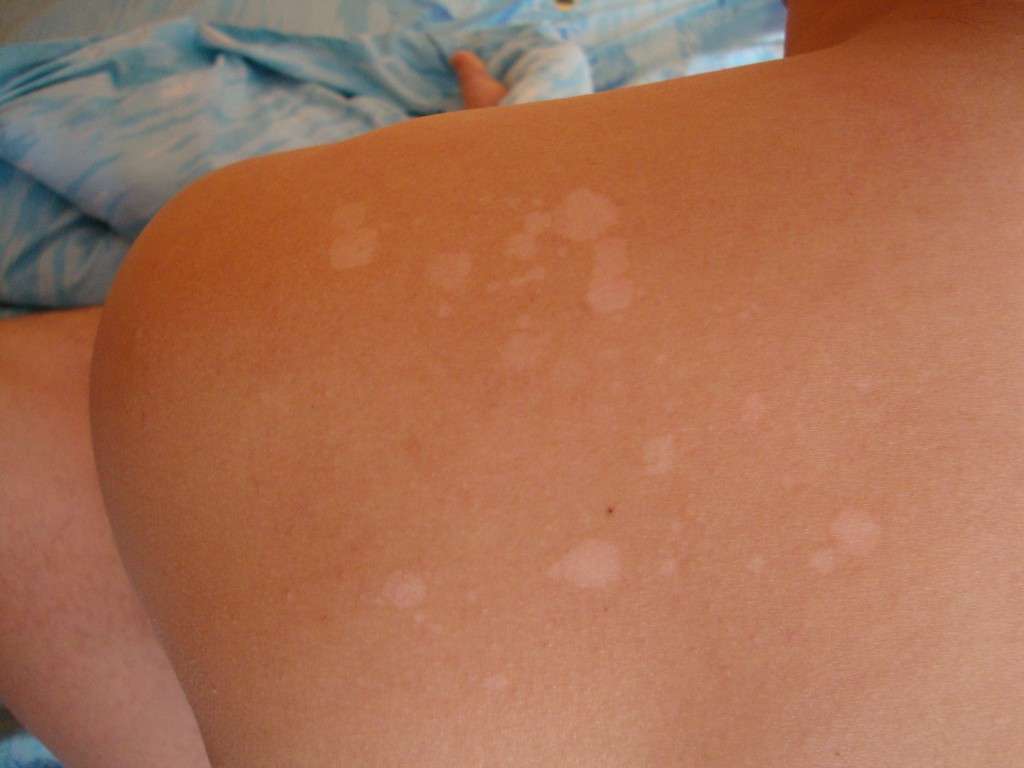
Back with white spots
Lack of vitamins and microelements
A newborn girl or boy often develops vitamin deficiencies. Babies need adequate nutrition. Breastfeeding mothers must follow a diet so that the baby receives all the necessary substances through milk. When bottle-fed, babies are fed formula milk, which contains all the necessary vitamins.
Deficiency of B vitamins causes impaired pigmentation of the newborn's skin. To eliminate the problem, he is prescribed vitamin injections until the child learns to chew and swallow. Treatment with drop solutions is possible, but they are not as effective, since some of the vitamins are destroyed in the stomach during digestion.
A decrease in the level of zinc, iron and copper in the body leads to depigmentation of skin areas. Micronutrient deficiency in infants is usually congenital, so treatment begins in the maternity hospital. A nursing mother is prescribed a strict diet.
The presence of white spots on a child’s body does not cause serious harm to health. If the phenomenon is genetic or congenital, then nothing can be changed, you can only improve the appearance of the skin. Infectious and helminthic leukodermas are easily treated, and the child’s skin quickly recovers.
What are the causes of pityriasis alba
Asbestos pityriasis appears on the skin after suffering from dermatitis and inflammatory processes in the skin.
Also, a patient with eczema may inadequately use ointments based on glucocorticosteroids, which will subsequently appear in lighter areas of the skin in the affected areas.
In this pathology, a hereditary predisposition to the disease plays a huge role, as well as non-compliance with hygiene rules, weakened immunity, and fungal infections of the hair follicles.

Risk factors for pityriasis are:
- chronic skin diseases;
- diseases of autoimmune etiology;
- contact with stray animals.
Skin color and white spots
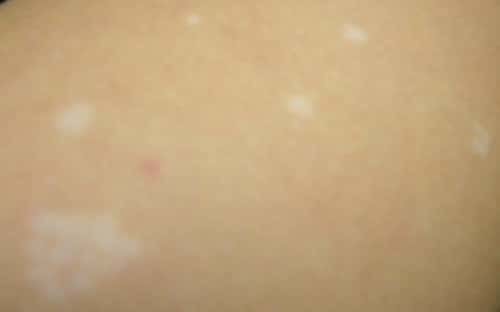
As you know, the skin color of each person is a purely individual characteristic, genetically determined. The color depends on the amount of melanin - a kind of “paint” produced by melanocyte cells.
Initially, nature predetermined the uniform coloring of the skin in one shade or another. But there are a number of factors that influence the concentration of melanin in certain areas of the body or its complete absence. Therefore, if there is no melanin in the skin, it becomes discolored.
White spots on the body may indicate the following disorders:
- autoimmune diseases;
- viral infections;
- disruptions in the functioning of the endocrine system, in particular the thyroid gland;
- pathologies of the digestive system;
- hormonal disorders;
- genetic predisposition.
People of any age are susceptible to this problem. White spots look most frightening on a child's skin. It is not at all a fact that they cause discomfort to the baby, but vigilant parents begin to sound the alarm, not knowing the reasons for this phenomenon.
Is it correct? I guess, yes. After all, it is necessary to find out the nature of what is happening in order to take timely measures if a pathology is detected. But there is no need to panic. Timely contact makes it possible to completely get rid of the problem or get an intelligible answer as to whether something is worth doing at all.
Types of pityriasis
Pityriasis alba
It is only one type of pityriasis. It is characterized by damage to the scalp.
Pityriasis rosea
The most common form of pityriasis. Pink spots are localized throughout the body, have clear boundaries and a small depression in the center. The rash does not merge with each other, however, the elements tend to grow, which then ends in peeling of the skin around the spot.
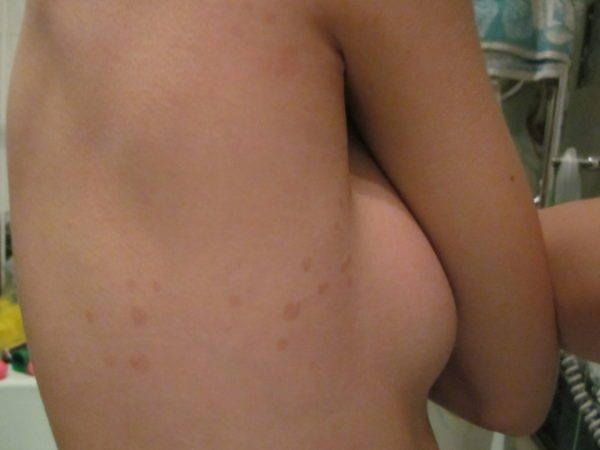
Pityriasis rosea is characterized by severe itching. When combing the formations, white scales stand out clearly.
The rash normally goes away after 7 days, but with reduced immunity, frequent bathing, increased sweating and allergies, the healing process may slow down.
Pink pityriasis causes intoxication of the body, which is accompanied by an increase in body temperature and enlarged lymph nodes.
Lichenoid pityriasis
Another form of pityriasis is lichenoid pityriasis. It is characterized by the appearance of papules or vesicles on the skin, which form scales and resolve with scars.
There is acute lichenoid pityriasis, which is characteristic of childhood, and chronic, which is observed more often in adults.
